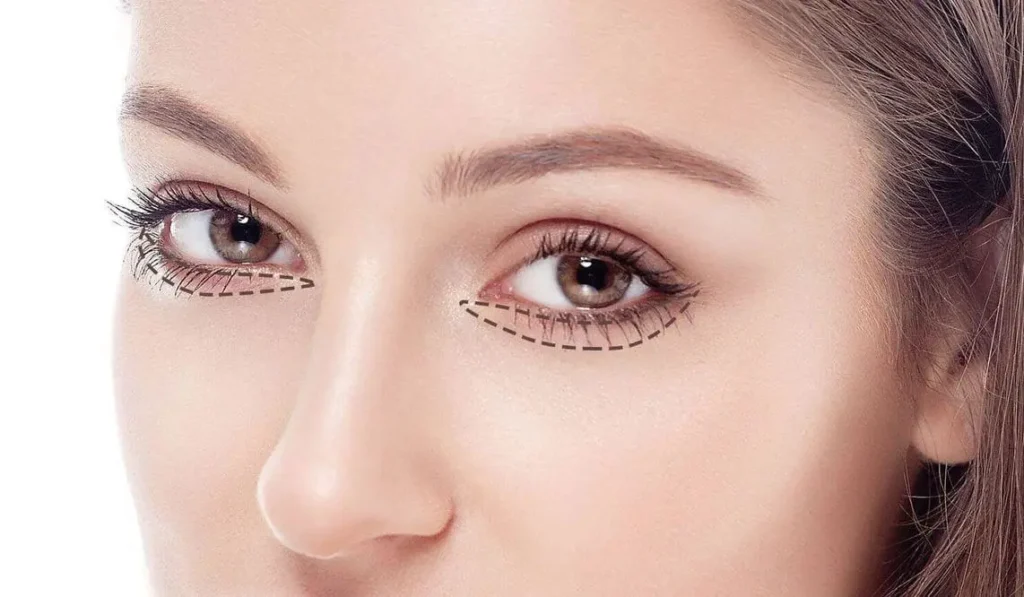Blepharoplasty can be performed under local or general anesthesia. It depends on the number of eyelids to be operated on, the type of changes to be made and the patient’s preferences. Eyelid surgery in Tunisia generally lasts between 30 minutes and 2 hours. The duration of hospitalization is 1 day.
The surgeon begins by making incisions, making sure that they are hidden in natural folds. This is to prevent future scars from being visible.
The skin incisions of the upper eyelids are concealed in the crease that is located halfway up the eyelid (between the fixed and mobile parts of the eyelid).
The skin incisions of the lower eyelids are placed 1 to 2 mm under the eyelashes. They can sometimes extend a little outside.
It is from these small incisions that the excess fat, muscle and skin will be removed. Once this removal is done, the incisions are stitched with very fine threads. In the case of a lower blepharoplasty, a re-tensioning of the eyelids may also be required in order to tighten the lower eyelid margin.


